Globalization International

How does the globalization of sports affect national identities and patriotism ?
The globalization of sports has had a significant impact on national identities and patriotism, with both positive and negative effects. On the positive side, it has increased exposure to different cultures, provided opportunities for international collaboration, and brought economic benefits to host countries. However, it has also led to concerns about diluted national identity, commercialization and corruption in sports, and unequal access to resources between developed and developing nations. Balancing these aspects will be crucial in ensuring that sports continue to unite rather than divide us on a global scale.

How has sports culture influenced globalization ?
Sports culture has significantly influenced globalization by promoting international cooperation, cultural exchange, economic benefits, media coverage, and tourism. Sports events like the Olympics and World Cup foster goodwill among countries, while also generating revenue through ticket sales and sponsorships. Athletes from different nations come together to share their skills and traditions, leading to mutual respect and appreciation of diverse cultures. Sports tourism is a growing industry that promotes cultural exchange and economic growth in host cities and countries. Overall, sports culture plays a crucial role in promoting global awareness and understanding.

What are the economic implications of the globalization of professional sports leagues ?
Globalization has significantly impacted the world of professional sports, leading to increased competition, market expansion, and financial opportunities. This phenomenon has brought about various economic implications that affect players, teams, leagues, and fans alike. One of the primary effects is the increased competition among teams and players, driving up player salaries and transfer fees. Globalization has also led to the expansion of sports markets beyond traditional borders, allowing for greater revenue generation through increased ticket sales, merchandise sales, broadcasting rights, and sponsorship deals. However, it also presents challenges and risks such as corruption, match-fixing scandals, financial instability, and the dilution of local sports traditions. Overall, addressing these challenges is crucial for the continued success and sustainability of professional sports leagues worldwide.

How has globalization impacted cultural diversity around the world ?
Globalization has significantly impacted cultural diversity, leadingGlobalization has significantly impacted cultural diversity, leading adaptation but also potential homogen Policy and governance play a role in cultural preservation, with local resistance movements countering globalization effects. Striking a balance between global benefits and cultural preservation is crucial for maintaining diversity.
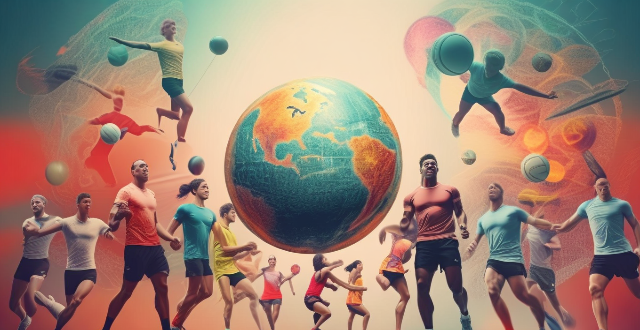
To what extent does the globalization of sports contribute to social equality and inclusion ?
The globalization of sports has led to increased opportunities for athletes from different backgrounds and cultures, but also poses challenges to social equality and inclusion. Efforts are needed to address these challenges and promote fairness, inclusivity, and respect for all athletes.

What impact has the globalization of sports had on local traditions and customs related to physical activity ?
The globalization of sports has significantly influenced local traditions and customs related to physical activity. This includes increased exposure to international sports, blending of cultures through sport, economic impact on local sports, changes in lifestyle and health perceptions, and preservation efforts. While globalization has brought about increased exposure and cultural exchange, it has also led to challenges such as declining popularity and resource allocation issues for local sports. Efforts to preserve and revitalize these traditions are essential for maintaining cultural diversity in the realm of physical activity.

What role does international competition play in promoting globalization through sports ?
The text discusses the role of international competition in promoting globalization through sports, highlighting its impact on cultural exchange, building international relations, encouraging global citizenship, driving innovation and development, and facilitating education and empowerment. It emphasizes how these events bring together diverse individuals and promote mutual understanding, cooperation, and friendship, ultimately contributing to a more interconnected world.

What role does cultural fusion play in globalization ?
Cultural fusion plays a significant role in globalization by enhancing cross-cultural understanding, promoting innovation and creativity, facilitating economic growth, and enhancing tourism experiences. It refers to the blending of different cultures, traditions, and practices from various parts of the world. This process has become increasingly important as globalization continues to bring people closer together through trade, travel, and communication technologies.

What is the impact of globalization on the sports economy, particularly in terms of international competitions and events ?
Globalization has significantly impacted the sports economy, particularly in terms of international competitions and events. This phenomenon has led to increased connectivity, interdependence, and cultural exchange among nations, which has influenced the way sports are organized, marketed, and consumed worldwide. The article discusses various ways globalization has affected the sports economy, including increased participation and exposure, expanded market opportunities, cultural exchange and diversity, as well as challenges and controversies such as inequality and commercialization. Overall, globalization has led to increased participation, expanded market opportunities, cultural exchange, and diversity within the sports world.

How has technology impacted international cooperation in recent years ?
The text discusses the impact of technology on international cooperation in various sectors such as communication, collaboration tools, access to information, globalization of trade and commerce, and environmental sustainability. Technology has improved communication through instant messaging, social media, and email, enhanced collaboration tools like project management software and video conferencing, increased access to information with open source data and online news sources, globalized trade and commerce through e-commerce platforms and digital payment systems, and promoted environmental sustainability with climate modeling and renewable energy technologies. Overall, technology has had a significant positive impact on international cooperation.

How has globalization affected the popularity of sports around the world ?
Globalization has had a significant impact on the popularity of sports worldwide. It has led to increased international competition, greater exposure for athletes and teams, and a more interconnected sporting culture. With the rise of global communication and transportation networks, athletes and teams from different countries can easily compete against each other, leading to numerous international tournaments and events. Social media platforms have provided greater exposure for athletes and teams, while live streaming services have made it possible for anyone with an internet connection to watch their favorite sports events live from anywhere in the world. Additionally, globalization has fostered a more interconnected sporting culture, leading to the adoption of foreign sports by many countries and the exchange of ideas and practices between sports organizations worldwide.

How do cultural exchanges through sports influence international relations ?
Cultural exchanges through sports have a significant impact on international relations by promoting mutual understanding, enhancing diplomatic relations, promoting peace and unity, providing economic and social benefits, increasing globalization, and presenting potential challenges such as nationalism and commercialization concerns. These exchanges foster understanding, build bridges between nations, and contribute to a greater sense of global community.

What is the impact of cultural exchange on globalization ?
This essay explores the impact of cultural exchange on globalization. It states that cultural exchange plays a crucial role in enhancing mutual understanding and respect among nations, promoting economic growth and development, fostering international collaboration and cooperation, encouraging tourism and travel, and preserving cultural heritage and traditions. The essay concludes that as our world becomes increasingly interconnected, cultural exchange will continue to play a vital role in shaping our future together.
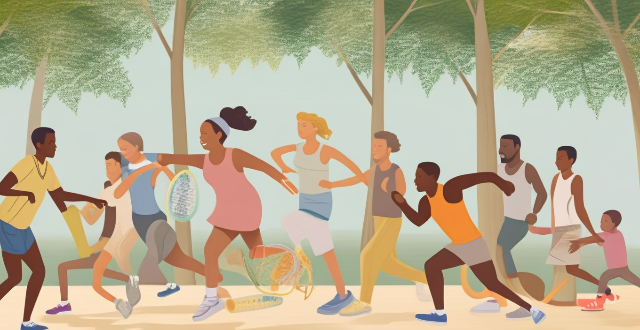
What ethical considerations arise from the globalization of sports, especially regarding issues such as doping and fair play ?
The globalization of sports has raised ethical considerations, especially regarding doping and fair play. Doping poses health risks and undermines the spirit of fair play by giving athletes an unfair advantage. International cooperation is crucial to address this issue effectively through education programs and strict enforcement mechanisms. Fair play involves respecting opponents, officials, and fans, as well as avoiding cheating or unsportsmanlike behavior. Clear codes of conduct should be established by international sports organizations to ensure that all participants adhere to the same rules and standards of conduct. Strict penalties should be imposed on those who engage in misconduct to deter others from following suit.

How does the globalization of sports impact player recruitment and talent development ?
The globalization of sports has led to increased competition in player recruitment, diversification of talent pools, and the adoption of advanced training methods. This includes exposure to international markets, cultural exchange, geographic broadening, demographic variety, technological integration, scientific approaches, language and communication adaptation, and education and life skills development.
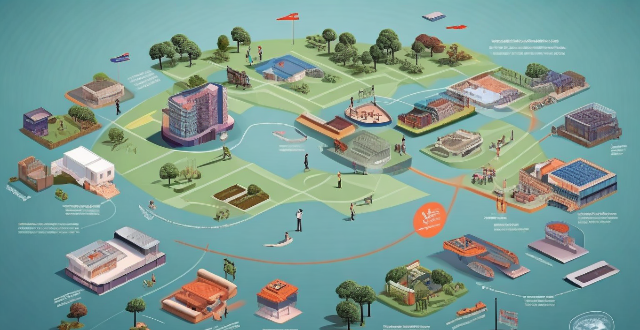
How does the globalization of sports media affect fan engagement and consumption patterns ?
The globalization of sports media has significantly impacted fan engagement and consumption patterns. Enhanced accessibility through live streaming, on-demand content, and digital platforms has revolutionized how fans watch and interact with sports. Diverse content offerings, including international coverage and multilingual broadcasts, have expanded the reach of sports to global audiences. Personalized experiences through customized content and fantasy sports have increased fan engagement. Additionally, virtual events, e-sports, and online tournaments provide new opportunities for fans to participate and engage. Changes in consumption patterns, such as a shift towards digital subscription models and online merchandise shopping, reflect the evolving landscape of sports media. Overall, the globalization of sports media has transformed the way fans consume and enjoy sports worldwide.
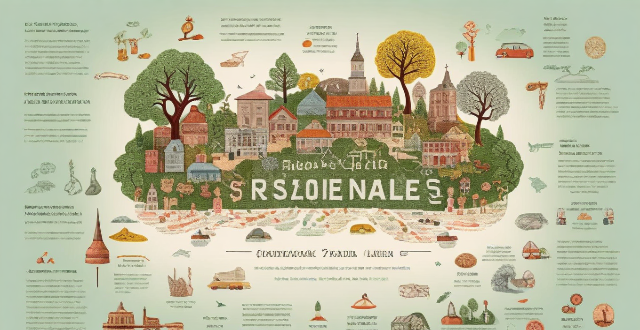
Is there a risk that cultural fusion could result in cultural homogenization ?
The text discusses the risk of cultural homogenization that comes with cultural fusion, which is the blending of different cultures. This process leads to the loss of distinctive features of individual cultures as they become increasingly similar due to globalization, migration, and other forms of cultural interaction. The phenomenon of cultural homogenization is characterized by the loss of heritage, dominance of global culture, and erosion of local practices. Several factors contribute to this, including globalization, mass media, migration, and economic influence. To mitigate the risk, it is essential to promote cultural preservation and exchange while discouraging the domination of any single culture. This can be achieved through supporting local cultures, cultural exchange programs, education, and policy measures.

What are the challenges in tracing the origin of viruses ?
The origin of viruses is a complex and intricate subject, involving various disciplines and advanced technology. Researchers face challenges such as genetic diversity, asymptomatic hosts, environmental reservoirs, international travel, limited historical data, political and social factors, funding constraints, technological limitations, legal and ethical concerns, and public perception. Understanding viral origins is crucial for preventing future outbreaks and developing effective treatments. Overcoming these challenges requires international cooperation, interdisciplinary approaches, and ongoing investment in science and technology.

How can universities improve their support services for international students ?
Universities can enhance support for international students by offering cultural orientation, language training, academic tutoring, writing assistance, social integration activities, career development, and internship opportunities.

In what ways have advancements in technology facilitated the globalization of sports ?
Globalization of Sports through Technological Advancements Introduction: - Technology has played a crucial role in making sports a universal language, connecting fans and athletes across the globe, and enhancing the overall experience of sporting events. 1. Improved Communication and Connectivity: - Fans can access information about their favorite sports and teams instantly through smartphones, tablets, and laptops. - Social media platforms have revolutionized the way fans interact with each other and their favorite athletes. 2. Advanced Broadcasting Technology: - Live streaming services and high-definition television broadcasts provide an immersive viewing experience for millions of people worldwide. - Virtual reality (VR) and augmented reality (AR) technologies are transforming the way fans experience sports. 3. Enhanced Training Methods: - Data analytics tools enable coaches and trainers to track an athlete's performance metrics and create personalized training programs. - Virtual reality training simulations offer athletes a safe and controlled environment to practice and refine their skills without the risk of injury. 4. Increased Accessibility and Inclusivity: - Technology has played a crucial role in making sports more accessible and inclusive for people with disabilities through advancements in wheelchair design and materials. - The rise of online gaming and esports has created new opportunities for people to participate in competitive activities regardless of their physical abilities or location. Conclusion: - Advancements in technology have transformed the way we experience and participate in sports, making it a global phenomenon that unites people through shared interests and passions.

Can international students apply for scholarships ?
International students can apply for various scholarships offered by universities and organizations to offset the cost of tuition, books, and living expenses. These include merit-based scholarships awarded based on academic or leadership skills, need-based scholarships considering financial situation, athletic scholarships, diversity scholarships, and first-generation college student scholarships. External organizations like the Fulbright Program and Rotary International also provide opportunities. To apply, research available scholarships, review requirements, prepare application materials, apply early and regularly, and seek additional funding sources.

What are some popular shopping apps that provide international shipping options ?
The text provides a summary of popular shopping apps that offer international shipping options, including Amazon with its Global Store, Amazon Global, and Prime International Shipping; eBay with its Global Shipping Program and International eBay Sites; AliExpress with Standard Shipping, CaoNiLao Premium Shipping, and DHL Shipping; ASOS with Global Shipping and free returns; and Zalando with International Shipping and partnerships with local postal services.

What policies and international agreements aim to protect biodiversity ?
The text provides an overview of various policies and international agreements that aim to protect biodiversity, including the Convention on Biological Diversity (CBD), the United Nations Framework Convention on Climate Change (UNFCCC), the Ramsar Convention, the International Union for Conservation of Nature (IUCN), the World Wildlife Fund (WWF), the Nagoya Protocol, the Global Environment Facility (GEF), national policies and legislation, and the Great Ape Project. These initiatives are crucial for maintaining ecosystem health and human well-being, but face challenges in implementation and enforcement.

What are some examples of how climate change has affected international security ?
Climate change has significant implications for international security, including resource scarcity and competition, displacement and migration, state fragility and failed states, environmental refugees, and national security threats. These challenges require global cooperation and strategic planning to mitigate their effects on international stability.
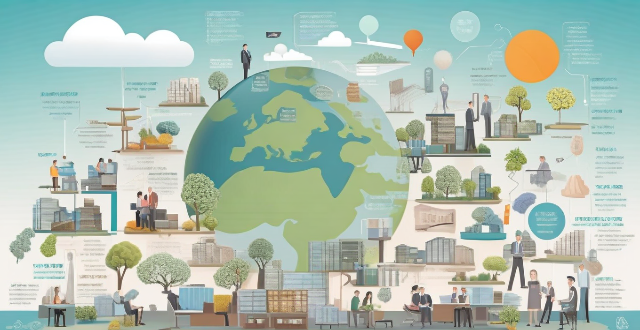
What is the importance of international cooperation in addressing climate change ?
International cooperation is crucial in addressing the global challenge of climate change. It enables shared responsibility, economic efficiency, political will, global impact, innovation and technology transfer, and strengthening multilateralism. By working together through international organizations and treaties, countries can take decisive action on climate change and create a sustainable future for all.

How do immigration policies influence international relations ?
Immigration policies have a significant impact on international relations, affecting economic partnerships, diplomatic ties, and cultural exchange. These policies can attract highly skilled workers, boost innovation, and enhance trade relationships, but they can also lead to job market issues and social tensions. Cultural diversification from immigration can improve mutual understanding and respect between nations, while restrictive policies can hinder the movement of diplomatic personnel. A country's approach to refugees and asylum seekers can influence its global standing, and the handling of refugee crises can lead to political tensions. Economic migration can cause a brain drain or be viewed as a form of development assistance. Immigration policies are a critical area of focus for international relations due to their far-reaching implications.

How can international cooperation improve global climate governance ?
International cooperation is crucial in the fight against climate change. It can improve global climate governance by enhancing information sharing and technology transfer, promoting policy coordination, strengthening legal frameworks, facilitating financial flows, building capacity and institutions, and promoting public awareness and participation. Countries can work together to collect and analyze data on climate change, share advanced technologies, coordinate policies, engage in joint research, enforce international agreements, provide climate finance, encourage green investments, build capacity for implementing climate policies, establish strong institutions, raise public awareness, and engage civil society organizations. By working together, countries can address the challenges of climate change more effectively and create a sustainable future for all.

Can you provide examples of successful international cooperation initiatives ?
Successful International Cooperation Initiatives International cooperation is a vital aspect of global progress, enabling countries to work together towards common goals. Here are some examples of successful international cooperation initiatives: 1\. The United Nations Framework Convention on Climate Change (UNFCCC) aims to stabilize greenhouse gas concentrations in the atmosphere at a level that prevents dangerous human interference with the climate system. It has been ratified by 197 parties, making it one of the most widely accepted international agreements. 2\. The World Health Organization (WHO) is the directing and coordinating authority on health within the United Nations system. It provides leadership, research, norms and standards, and technical support to countries worldwide. 3\. The International Space Station (ISS) is a joint project among five space agencies: NASA (United States), Roscosmos (Russia), JAXA (Japan), ESA (European Space Agency), and CSA (Canadian Space Agency). It serves as a microgravity and space environment research laboratory. 4\. The Convention on International Trade in Endangered Species (CITES) is an international agreement between governments aimed at ensuring that international trade in wild animals and plants does not threaten their survival. It regulates or bans trade in species listed in its appendices.

What are the best websites for international shopping ?
The text provides a summary of the best websites for international shopping, including Amazon, eBay, AliExpress, ASOS, and Farfetch. It highlights the features and benefits of each website, such as global reach, easy shipping, customer reviews, auction-style shopping, buyer protection, affordable prices, diverse product range, direct shipping, fashion-forward clothing, free shipping, wide size range, luxury fashion, authentic products, and global shipping. The text concludes that these websites offer a great selection of products from different countries and provide convenient shipping options for international shoppers, meeting their needs for affordable fashion or luxury items.